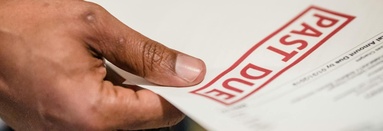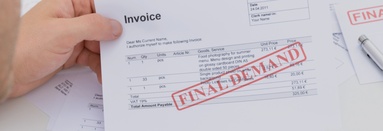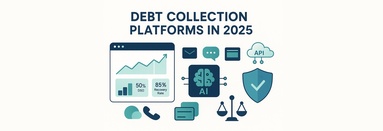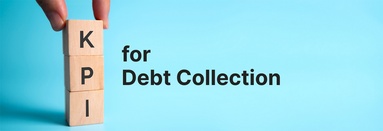Imagine closing a million-dollar deal—only to realize six months later that half the payment is still “in process.” On paper, the sale looks impressive. In reality, the company is scrambling to cover payroll because the money never landed in the bank.
This gap between revenue earned and cash collected is where many businesses stumble. For entrepreneurs and managers of large enterprises, strong accounts receivable (AR) management paired with effective debt collection isn’t just accounting—it’s survival.
Accounts Receivable: More Than Numbers on a Ledger
Accounts receivable is essentially a promise to pay—the money clients owe after receiving goods or services. But promises don’t pay suppliers, employees, or investors.
Large enterprises, in particular, often carry millions in outstanding receivables. A small percentage of unpaid invoices can equal the budget for an entire project. Common pitfalls include:
- Clients stretching payment terms far beyond agreement.
- Disputes over contract language delaying settlement.
- Finance teams juggling outdated spreadsheets instead of real-time systems.
Without strong AR discipline, even profitable companies may find themselves short on cash.

Cash Flow: The Silent Victim of Weak AR
Every unpaid invoice locks away working capital—the money that could fund R&D, expansion, or day-to-day operations. Businesses under pressure often:
- Dip into credit lines, adding interest costs.
- Delay new hires or vendor payments.
- Scale back growth plans despite healthy sales.
In short, poor AR practices turn opportunity into risk.
When Accounts Receivable Turns Into Debt Collection
There’s a point when receivables stop being a friendly reminder and start becoming a liability. Typically:
- 30 days past due → considered late.
- 60 days past due → red flags raised.
- 90+ days past due → often requires professional intervention.
At this stage, businesses must decide whether to continue chasing the debt in-house or bring in outside specialists.

Smart AR Practices That Reduce Risk
- Set expectations early: Make payment terms crystal clear, including interest on late payments.
- Automate the routine: Let invoicing platforms handle reminders and tracking.
- Pick up the phone: A personal check-in often resolves issues before they spiral.
- Track patterns: Use reporting tools to identify clients with repeat delays.
Preventing problems is cheaper than fixing them—but when prevention fails, strong collection measures matter.
Debt Collection: Enterprise Strategies
In-House Collection
Larger companies sometimes assign internal teams to follow up on overdue accounts. This preserves control but can overwhelm staff and create tension with valuable clients.
Outsourced Collection
Specialized agencies and attorneys bring legal knowledge, negotiation skills, and international reach. They’re particularly useful when invoices cross borders or involve high-value contracts.
The Legal Dimension
Debt collection isn’t just about persistence—it’s about compliance. Regulations vary across states and countries, and a single mistake can trigger lawsuits or reputational damage.

Where Retrievables Fits In
Commercial Debt Needs Specialists
Unlike consumer debt, commercial debt is tied to large contracts, supply chains, and ongoing partnerships. Recovering it requires tact, legal expertise, and industry-specific knowledge.
The Retrievables Advantage
Retrievables takes the guesswork out of finding the right professional. Instead of businesses spending weeks searching for an agency or attorney, Retrievables connects them with vetted experts who know how to handle their specific type of receivable.
Cash Flow, Protected
By speeding up recovery and reducing write-offs, Retrievables helps enterprises maintain liquidity and focus on their real priorities—growth, innovation, and stability.
The Next Era of AR and Collections
- Predictive analytics will warn businesses before an invoice is at risk.
- AI-driven workflows will automate follow-ups and risk scoring.
- Relationship-first recovery will replace aggressive tactics with professional, respectful resolution.
The future of collections is not just about recovering money, but about doing it in a way that sustains long-term business relationships.
FAQ
At what point should I hand an overdue invoice to collections?
Typically after 60–90 days past due, if reminders have failed.
How does commercial debt collection differ from consumer?
Commercial involves businesses, larger sums, and contractual disputes; consumer involves individuals and personal debts.
Could debt collection damage customer relationships?
Handled poorly, yes. Handled professionally, it often strengthens trust by resolving disputes fairly.
Do collection firms always charge upfront?
Not always—many work on contingency, charging only if money is recovered.
Should I outsource all collections?
Minor late payments can be managed internally, but complex or high-value cases are best outsourced.
What makes Retrievables unique?
Retrievables streamlines the process of finding the best-fit collection attorney or agency, saving time and boosting recovery rates.
Conclusion
Unpaid invoices aren’t just accounting entries—they’re stalled growth, missed opportunities, and hidden risk. By combining disciplined accounts receivable management with smart debt collection, companies can transform receivables from fragile promises into real revenue.
Retrievables makes this transition easier. By connecting businesses with the right collection experts, it helps protect cash flow, reduce risk, and keep enterprises focused on what matters most: building the future.
































